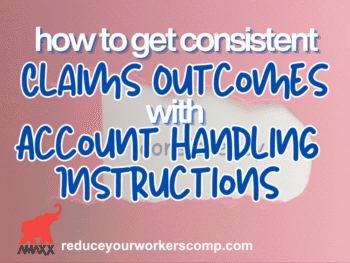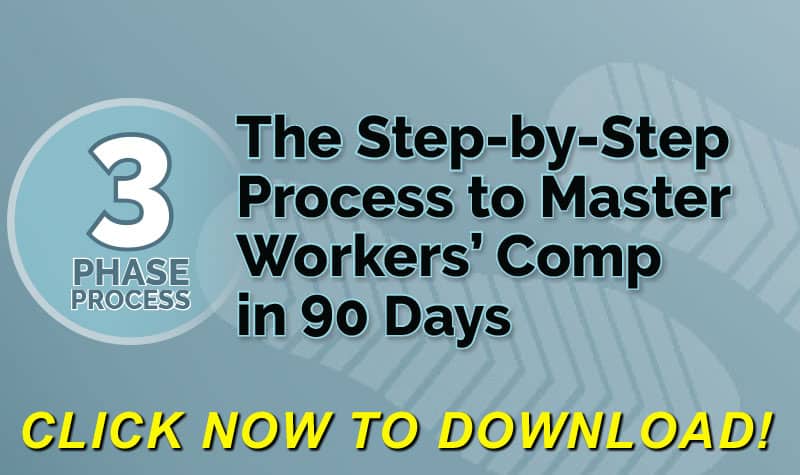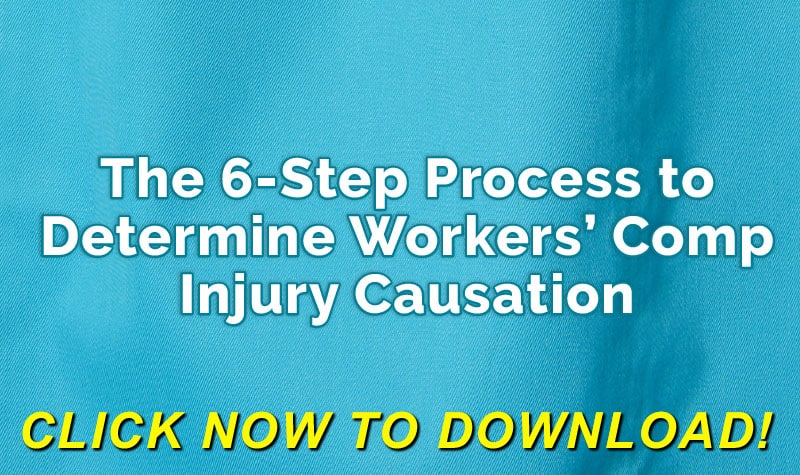A Reader Writes…
I am just beginning to implement a workers' comp management program and I need help with controlling the events surrounding work related injuries. It seems when employees are injured, they leave work, go to their doctor and call in sick for a few days.
I need a tool to verify the extent of their injuries and keep me in the information loop. Can you suggest anything?
Rebecca Shafer Replies: The tool we use is called a work ability form. Similar forms have other names like Work Capacity Form, etc. Keep in mind, one of the benefits of a workers' comp management program is the ability to structure processes by building forms not only designed to capture injury events, but to control process after the injury occurs. Your work ability form can be customized to reflect how your company wants things done. Keep in mind, you must comply with all state and federal laws applying to your business.
The point of a work ability form is to track the injured employee through the healing process, with return-to-work as quickly as possible being the final goal.
Include instructions to the treating physician with your fax number and request the completed, signed form be faxed to you within 24 hours following the injury.
Calendar all upcoming appointment dates and be sure the treating physician has additional copies of your form to complete and return to you following each subsequent medical appointment.
Seven Basic Sections of a Work Ability Form
1. Employee Information
Get the patient's full name, home, cell, business phone numbers. Date, time and place of the injury. If you are multi-sited, get the employer's name. Make sure the employee signs the release of medical records section, if at all possible so the treating physician can fax to you the part of the form with a diagnosis, prognosis. Once you have the information you can begin to build a modified duty job to offer to the injured employee as soon it's appropriate to do so.
2. Injury Information
Gather as much information about the injury as you can. Is it a new injury, a recurrence? What part of the body was injured? What is the diagnosis and prognosis? What type of physical exam was conducted subsequent to the injury?
3. Treatment
What kinds of medications are administered? Is further treatment necessary? Will treatment include physical therapy, hand therapy, etc.? Were tests administered (CT Scan, MRI, EMG, X-Ray)? Include dates, times.
4. Work Ability
What is this patient's prognosis for returning to work? Did the treating physician review the patient's job description (that you ensured the patient brought with him to the treatment facility)? Was the doctor able to view a job analysis video really see what the patient's job entails?
What is the return to work status? Can the patient return to full duty with full restrictions, and if so, when? You need a specific date. Is the patient returning to work with some restrictions? What are the restrictions and how can you work with the treating physician to accommodate a modified duty position. Regardless of type of modified duty, you must require a return to work date. Ask: Will the patient remain off duty? If so, until when?
5. Physical Restrictions
The treating physician completes a detailed report of the patient's ability in physical functions such as keyboarding, squatting, kneeling, sitting, driving, standing, walking, etc. The initial report is used as a base line to compare against future work ability reports the patient and treating physician complete as the patient recovers. Make a note if the patient requires an assistive device such as a wheel chair or a cane, in order to factor its use your modified duty plan. (workersxzcompxzkit)
6. Next Appointment
The treating physician assign a follow-up examination date and makes comments in this section.
7. Medical Provider Signature
The treating physician swears everything entered into the form is true. Insert instructions to have the doctor's name printed as well as signed and dated.
Author Rebecca Shafer, Attorney, Consultant, Writer, Amaxx Risks Solutions, Inc. has worked successfully for 20 years with many industries to reduce Workers’ Compensation costs, including airlines, healthcare, manufacturing, printing/publishing, pharmaceuticals, retail, hospitality and manufacturing. Contact: RShafer@ReduceYourWorkersComp.com or 860-553-6604.
FREE WC IQ Test: http://www.workerscompkit.com/intro/
WC Books: http://www.reduceyourworkerscomp.com/workers-comp-books-manuals.php
WC Calculator: http://www.reduceyourworkerscomp.com/calculator.php
TD Calculator: http://www.reduceyourworkerscomp.com/transitional-duty-cost-calculator.php
Do not use this information without independent verification. All state laws vary. You should consult with your insurance broker or agent about workers' comp issues.
©2010 Amaxx Risk Solutions, Inc. All rights reserved under International Copyright Law. If you would like permission to reprint this material, contact Info@WorkersCompKit.com
















